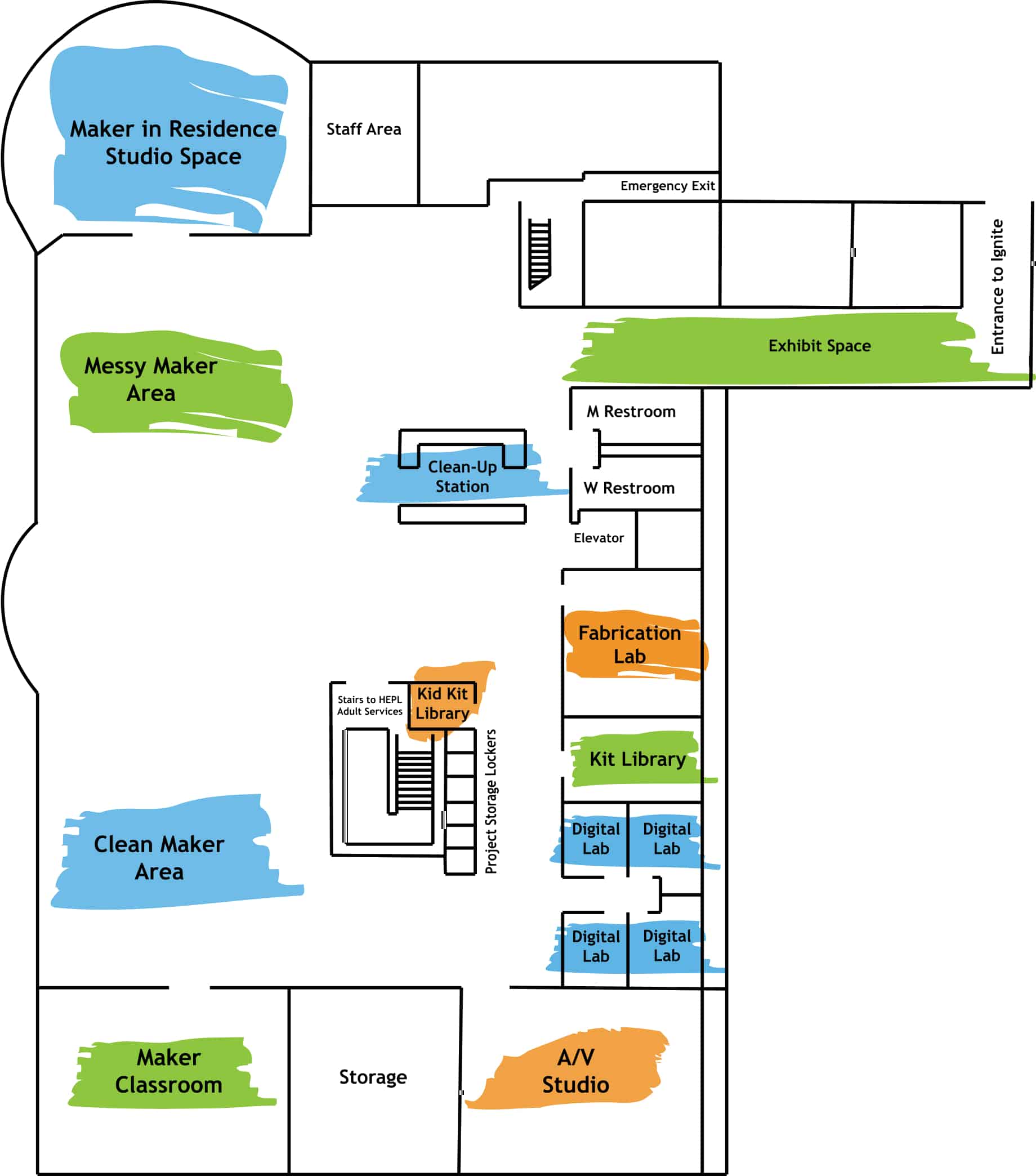by Katie W.
Hey y’all, it’s Katie here with another Ignite Studio art blog! Something I hear a lot from people is “I’m no good at drawing, I can only do stick figures” or “I want to learn figure drawing but it’s scary and I have no idea where to start.” If this sounds like you, that’s great! You’re in the right place, because if you can draw a stick figure, you can do gesture drawings! Read on for a quick intro to gesture drawing. And come into Ignite to check out on of our sketching and drawing kits to get started.
Intro to Gesture Drawing
Gesture drawings are usually quick sketches that are produced to help artists capture the movement, poses, and expressions of their subjects. The artist focuses on the pose and movement of the subject to draw the shape of the figure, rather than focusing on drawing the subject accurately or rendering any details. It can be a helpful tool for artists of all levels, from beginners who are just starting to learn how to draw figures, to experienced artists who want to warm up before starting a larger piece.

To do a gesture drawing you need the following supplies:
- Something to draw with
- Something to draw on
- Something to draw
You can draw with any kind of art medium you like. Personally, I prefer a good ol’ fashioned sketchbook and charcoal. Charcoal is great for gesture drawing because it allows for easy, graceful movement/ strokes. If you don’t have or like charcoal, a pencil works too, though I’d recommend a 6B (softer) pencil. The important thing is that your lines are thick and easy to make. You can find all of these tools in Ignite’s kit library.
When it comes to drawing subject, a real-life model is the best way to learn. The model could be a friend, family member, or anyone else you can convince to stand/sit still for a couple minutes. (Pro tip: got a floor length mirror? Be your own model!) We also offer figure drawing classes here at Ignite on the first Monday and third Wednesday of every month 5:30-7:30pm. Visit our event calendar to learn more, and come join us for that and draw one of our models!
How to gesture draw
To begin a gesture drawing, try capture the essence of the pose (make a stick figure). Once you have done that, you can go back and add more details (outlines, muscles, clothes, etc.) This follows the general art guideline of working general to specific.

Start with the head first. Everything flows from the head, and it helps to develop a consistent starting point. With each pose, I will look for the head and quickly draw the outline before moving on to the rest of the pose. By doing this, there is no hesitation at the start of every pose as I know exactly how I want to start. Also, try to make a quick note of where the head is looking (up, down, left, right).
After you have identified the head, then observe how the rest of the body is flowing from there. A great reference point is the spine. If I am ever lost, I just follow the spine and try to build form around that. At the end of the spine should be the hips/waistline. Then, move to the limbs. Find their general shape, length, and direction (draw a line/ lines to represent them). After the limbs, add more lines for hands and feet.

Now, you should have a gesture drawing! You can stop here with your sketch, or go on to add more details. It can be as simple or complex as you like! Just remember not to get caught up in how “good” it looks, it’s not about that! All that matters is that you’re learning (and having fun).

